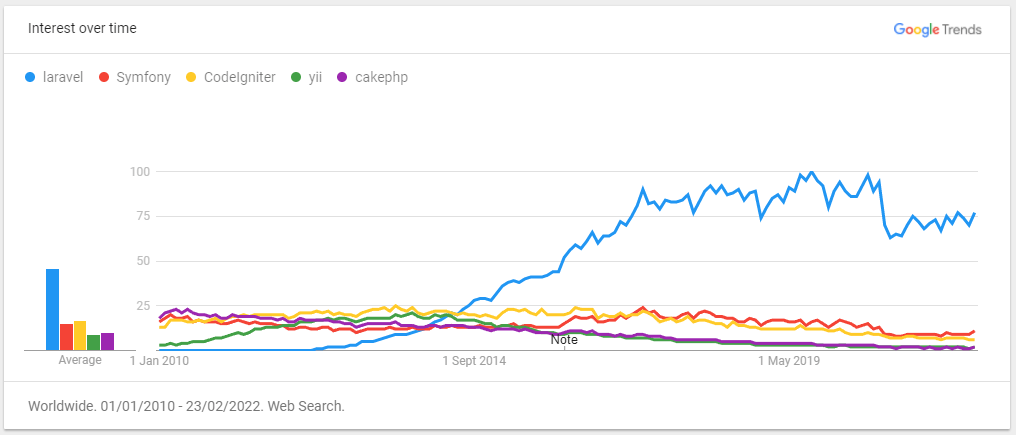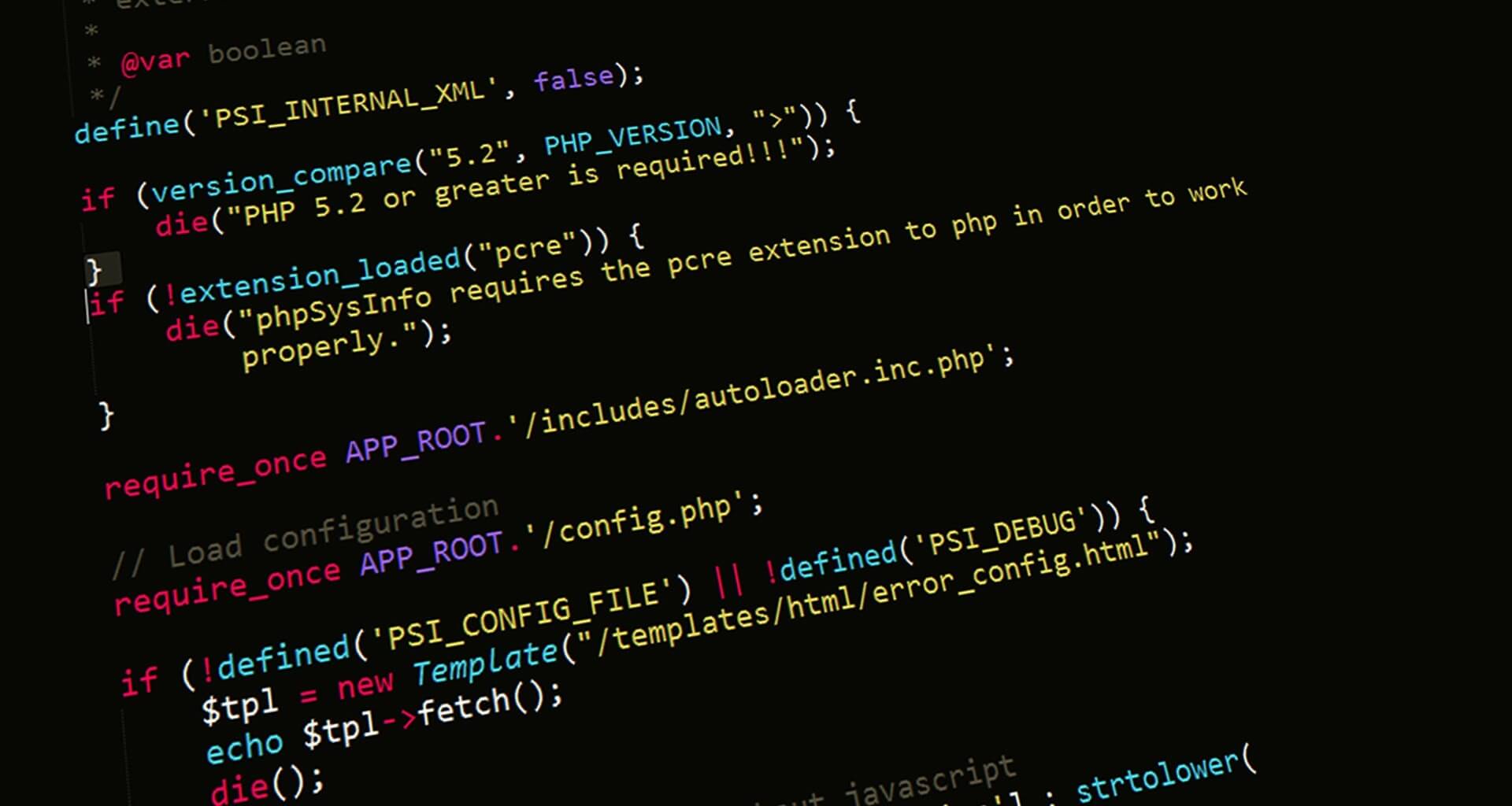Whether you’re new to web development or just curious about Laravel. This post will answer the simple question, what is Laravel in easy to understand terms.
Since the first release of Laravel over 10 years ago in 2011, Laravel has become the fastest growing PHP frameworks on the market. Quickly surpassing other popular frameworks such as Symfony, CodeIgniter and Yii in interest:

With its popularity continuously growing, Laravel is likely to be the number one choice in many web development projects. But what exactly is Laravel and why is it used so commonly?
What is Laravel?
Laravel is an open-source PHP framework used to build websites and apps. It contains all the necessary components and features to help web developers create a website using the PHP scripting language. It is important to note that Laravel isn’t the only framework available to PHP developers. In fact, other popular PHP frameworks include Symfony, CodeIgniter and Yii (just to name a few). And if we venture outside the PHP zone, there’s even more frameworks available, such as Rails which is based on the Ruby language, .NET which uses C#, or Sails.js, a Javascript framework.
Just like most popular web frameworks, Laravel follows a model-view-controller (MVC) approach to development. This simply means that the development process is broken down into three main components:
- Model: How data is handled and maintained on the site or app.
- View: This is the visual representation of the data, or in other words the UI (user interface). This bit will be mostly handled by HTML/CSS. Examples of UI elements may include drop-downs, charts, text boxes and tables.
- Controller: As the name suggests, it controls the data shown to the user. When a user interacts with the site/app, it will retrieve the relevant data from the model and then display it to the user using the view component.
As you can imagine, this MVC approach to website development can have many benefits including faster development times, easier maintenance and even greater scalability. This makes a framework like Laravel a desirable choice for custom web projects. For more information, see our post on Laravel benefits.
Is Laravel frontend or backend?
Laravel is primarily a backend framework. It does offer some minor front-end functionality, but works best with another front-end framework. When it comes to selecting a front-end framework for your Laravel project, there are plenty of options to choose from. One of the popular choices for Laravel is Vue.js. There is plenty of documentation and support online for integrating Vue.js with Laravel, as well as other front-end frameworks.
How is Laravel Different from PHP?
Laravel is a framework, while PHP (or core PHP) is a programming language. A framework is a collection of programming languages, libraries and components. The purpose of using a framework is to make development of a site or app easier and faster. Since frameworks already have common features and tasks built-in. In comparison, if you were to use core PHP to develop a site from scratch it would take ages to write the code entirely. The only real similarity between Laravel and PHP is that both can be used to build web applications. And of course, without knowledge of PHP it would be very difficult for a developer to use the Laravel framework.
Is Laravel a Programming Language?
No. Laravel is a framework built using the PHP scripting language. PHP is an open-source server-side language. In other words, it is a backend language responsible for handling and processing data on a website. PHP on its own can not be used to create a web application. Client-side languages, such as Javascript, HTML and CSS are also needed to form the front-end of an application, alongside PHP.
Why is Laravel Used?
Laravel Developers mainly build custom websites or applications using PHP, alongside other languages. Of course, writing the code from scratch in custom projects could take ages, so a framework like Laravel is used to save time. Some of the key features of Laravel include:
- Built-in Modules: Built-in packages means that you can add ready-made features to your web application, without the need of having to write code from scratch. You can even create your own custom packages separately and add them to your site.
- Automated Testing: Laravel offers both unit testing and feature testing. Unit testing can test small pieces of code. While feature testing can be used to test larger pieces of code or features on the site.
- Route Handling: Using simple names, rather than long path names makes it easier to manage bigger applications. Plus all route names can be changed in one place via a dedicated file, instead of having to manually change route names multiple times throughout the application.
- Security Features: Laravel offers a range of security features, such as user authentication, role authorizations, email verifications, password hashing and more.
- Database Migrations: With version control, database migrations are much easier to manage.
- Template Engine: The Blade template engine allows developers to easily create and maintain lightweight templates for their web pages.
- Eloquent ORM (Object Relational Mapping): Developers can write database queries using PHP syntax rather than SQL code. This makes it faster to manage and query databases.
Because Laravel has an extensive list of powerful features, it is recommended to be used on big projects, rather than small, simple web projects. Common examples of sites created using Laravel may include booking applications, forums, and even custom content management systems (CMS).
If you’re interested in creating a custom web application using Laravel, please contact our team.
